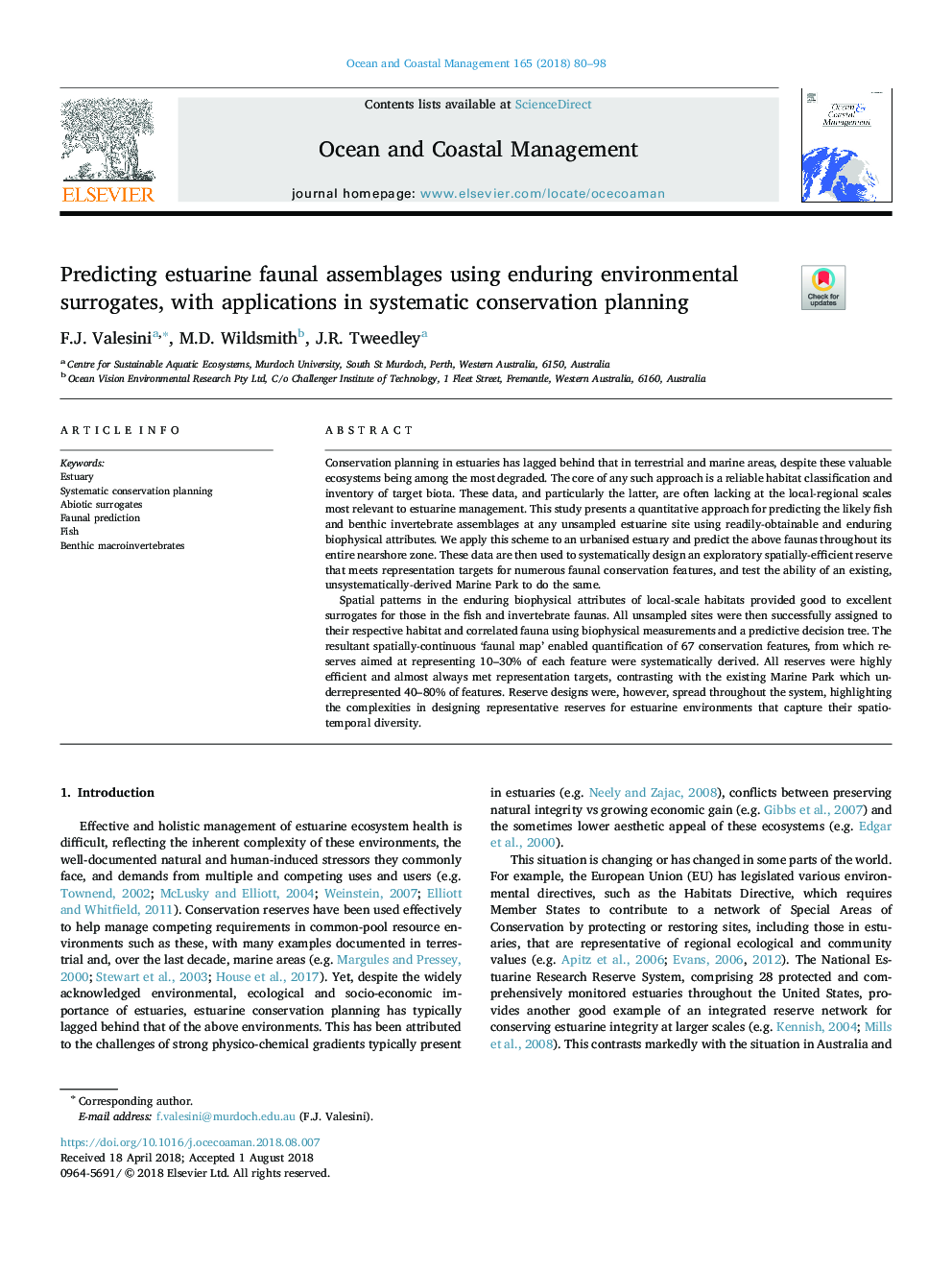| Article ID | Journal | Published Year | Pages | File Type |
|---|---|---|---|---|
| 9953596 | Ocean & Coastal Management | 2018 | 19 Pages |
Abstract
Spatial patterns in the enduring biophysical attributes of local-scale habitats provided good to excellent surrogates for those in the fish and invertebrate faunas. All unsampled sites were then successfully assigned to their respective habitat and correlated fauna using biophysical measurements and a predictive decision tree. The resultant spatially-continuous 'faunal map' enabled quantification of 67 conservation features, from which reserves aimed at representing 10-30% of each feature were systematically derived. All reserves were highly efficient and almost always met representation targets, contrasting with the existing Marine Park which underrepresented 40-80% of features. Reserve designs were, however, spread throughout the system, highlighting the complexities in designing representative reserves for estuarine environments that capture their spatio-temporal diversity.
Related Topics
Physical Sciences and Engineering
Earth and Planetary Sciences
Oceanography
Authors
F.J. Valesini, M.D. Wildsmith, J.R. Tweedley,
